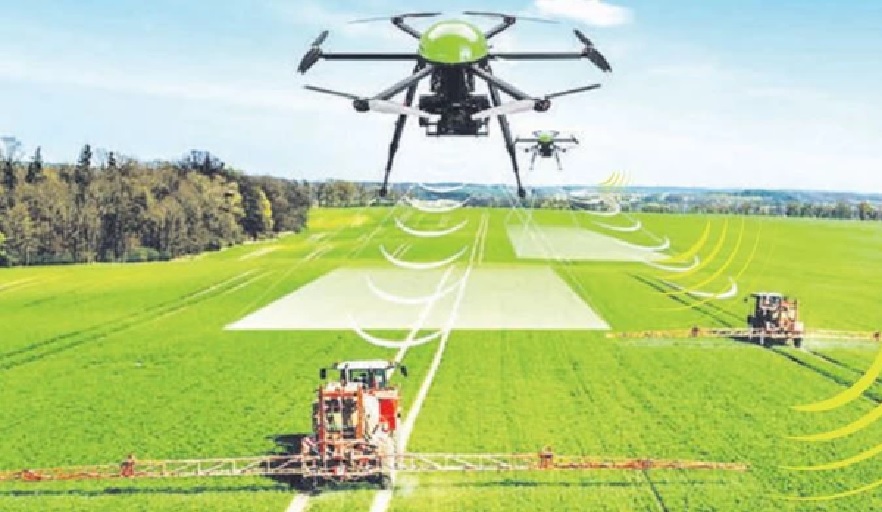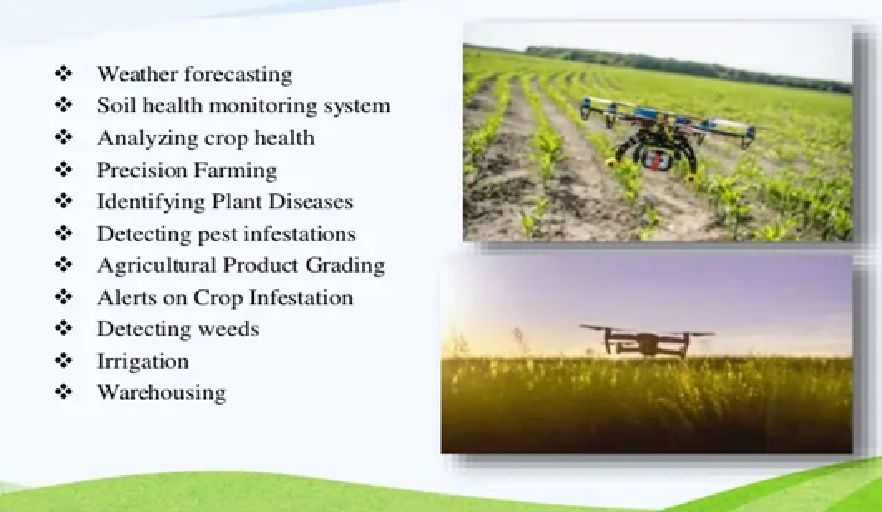The Future Scope for AI in Agriculture
Artificial intelligence holds the promise of driving an agricultural revolution at a time when the world must produce more food using fewer resources.
A robotic lens zooms in on the yellow flower of a tomato seedling. [1] Images of the plant flow into an artificial intelligence algorithm that predicts precisely how long it will take for the blossom to become a ripe tomato ready for picking, packing, and the produce section of a grocery store. The figure 1 shows the AI agriculture in future.

Figure 1: The AI Agriculture in Future
The technology is being developed and researched at NatureFresh Farms, a 20-year-old company growing vegetables on 185 acres between Ontario and Ohio. Knowing exactly how many tomatoes will be available to sell in the future makes the job of the sales team easier and directly benefits the bottom line, said Keith Bradley, IT Manager for NatureFresh Farms. It’s only one example of AI transforming agriculture, an emerging trend that will help spur an agricultural revolution.
This growth in agricultural output and productivity is being further enhanced by investments in technology. Disruptive technologies like AI are making big positive changes across Indian agriculture, [2] and an increasing number of agri-tech startups in the country are working to develop and implement AI-based solutions.
Globally, AI applications in agriculture reached a valuation of $852.2 million in 2019 and this is estimated to grow to almost $8.38 billion by 2030, a nearly 25 per cent growth. The Indian agri-tech market, presently valued at $204 million, has reached just 1 per cent of its estimated potential of $ 24 billion.
Currently, agriculture in India is resource-intensive sustainability is an issue due to high water use, desertification, and land degradation.
All of these pose an even greater threat to the agricultural industry at large. [3] Additionally, farmers suffer from low landholding, a lack of modern technology, and high-interest rate loans from the informal lending sector.
Across the supply chain, India’s US$ 215 billion logistics sector is one of the largest globally and has been growing at a CAGR of 10.5%, according to a recent report.
Identifying and eradicating weeds. The tractor sweeps the fields and the onboard computer system that are fitted on the camera run deep learning algorithms that is able to recognize the weeds and spray herbicide wherever it's needed. [4] This approach works by fitting a camera system on the back of a tractor and uses only 10% of the herbicides that would've been used following a conventional method which is simply spraying the entire field with herbicide.
Soil defects. By analyzing soil sample, it gives an idea of the types of microbes present in the soil. Based on that data, specialist can make recommendations on what kind of fertilizers can be used to improve the quality of the soil and whether soil contains any type of defects that needs to be treated.
References:
- https://www.intel.in/content/www/in/en/big-data/article/agriculture-harvests-big-data.html
- https://indianexpress.com/article/opinion/columns/artificial-intelligence-farmer-agriculture-7069520/
- https://techwireasia.com/2021/09/ai-applications-will-shape-the-future-of-indias-agriculture-industry/
- https://community.nasscom.in/communities/agritech/ai-agriculture-future-farming
Cite this article:
Vinotha D (2021) The Artificial Intelligence (AI) in Agriculture, AnaTechmaz, pp 5





